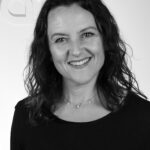Development of a genetic analysis method for the species determination of the main marine organisms of Iceland / Species identification of Icelandic marine organisms using a genetic analyzes technique
As the name of the project "Development of a genetic analysis method for species determination of Iceland's main commercial stocks" (reference number AVS R 012‐07 (08)) indicates, the aim of the project was to develop a rapid and reliable genetic analysis method for species analysis of Icelandic marine resources. There was no quick and reliable analysis method for Icelandic marine resources that are at the various stages of life and processing. Until now, appearance analyzes have been dominant in species analyzes of more complex organisms, but this work requires highly trained classification scientists and this method is generally time-consuming. Many marine organisms, eggs, larvae, juveniles and juveniles of fish are very difficult to distinguish from physical characteristics. If samples are not whole or detect an immature organ form, experts can not even identify the sample by species. Sequencing of species is a powerful and fast method for identifying unknown organisms. In the project, 26 marine resources were investigated. Genetic material was isolated from the samples but then the mitochondrial cytochrome c oxidase subunit 1 (COI), cytochrome b (Cytb) and 16S RNA (16S) were amplified with conserved indicators and then sequenced. The method was known, but some work was done to find the right references and the amazing conditions for the various groups. It has been internationally agreed to use the COI gene as a marker gene and several large sequencing projects are underway where large and powerful databases are under construction (such as the "Barcode of Life"). In the project, the COI, Cytb and 16S genes were partially differentiated for utilitarian organizations, and a total of 1-5 individuals were examined for each species. These sequences were collected in a database prepared together with published sequences for these species and other related species. After developing the method and setting up the database, the sensitivity of the method was examined with three types of unknown samples (blind samples). Firstly, samples were obtained from fish shops, secondly, samples from the Marine Research Institute's sample collection were analyzed and finally juveniles that were 2-8 cm long were analyzed. In all cases, the unknown samples were species identified using the DNA genetic method, but the appearance of the juveniles was quite difficult. DNA type analysis is much faster, cheaper and more accurate than traditional appearance analysis. This method therefore has a strong impact on the economy in order to ensure reliable analyzes of all life forms of the exploitable stocks, for the analysis of mixed samples from the sea and for species analysis at all stages of processing of marine products. Matís-Prokaria has already acquired a business for such an analysis service.
The goal of the project “Species identification of Icelandic marine organisms using a genetic analyzes technique” (project no. AVS R 012‐07 (08)) was to develop a sequencing databank for three chronometer mitochondria genes for 26 Icelandic marine species. Furthermore, to develop a DNA protocol to analyze mixed unknown samples, such as juveniles of fishes and identification of fishes in fish stores. Classical morphological identification of marine species is time-consuming and depends on a high degree of taxonomic expertise. This expertise is currently falling short, therefore, in many cases the identification of a species is the major bottleneck in marine biodiversity and ecosystem research. On demand, molecular diagnostic techniques have proven to be successful species identification tools. Recently, DNA barcoding has been highly accepted as a rapid, cost ‐ effective and widely applicable tool for species identification. Currently, the three most common DNA barcoding targets are the mitochondrial genes cytochrome c oxidase I (COI), cytochrome b (Cytb) and 16S RNA (16S). For DNA barcoding, the mtDNA gene, cytochrome c oxidase I (COI), has been highlighted as the genetic marker for species identification in huge international projects, like the project “Barcode of Life”. In this project we did a partial sequencing of these three genes of 26 Icelandic marine organisms that are utilized in Iceland. The method is straight forward; DNA is isolated from the specimen, the three genes are PCR amplified in separated reactions by using universal primers and then sequenced. A database was developed, saving the sequences obtained in the project for the three genes. Finally, 24 unknown samples (blind samples) were analyzed. Part of the samples were fish fillets from fish shops, some were samples from the databank of MRI and some samples were juvenile fishes that were difficult to identify by morphology. All samples were species identified easily by using the sequencing method, supporting the importance of the method. DNA species identification is more rapid, cost ‐ effective and more accurate than the classical morphological identification method. Therefore, this method is an important tool for the industry to ensure reliable identification of marine organisms in all life stages and process stages. Matis ‐ Prokaira already has customers for such identification services.







